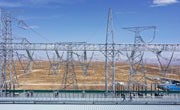In the two-children era, public services need updated concepts
“I took my two children onto the subway, but only one child could take a ride free of charge. I think this is unreasonable.” Recently, Miss Lin from Chengdu, Sichuan province posted the message on the city's online governance platform. When Lin took her six-year-old twins onto the subway, she was told by subway staff that a parent could only take one child under 1.3 meters tall to take the subway free of charge, and the other child needs to buy a ticket. “Nowadays, there are many families with two children, but the subway regulation still allows only one child to be free of charge, isn't this lagging behind the times?"
With the arrival of the two-children era, many parents are faced with a new trouble. When entering scenic areas or taking public transportation, many places stipulate "one adult can only take along one child, ticket purchasing is needed others exceeding the one-child limit.” Thus, one child is exempted, but the other needs to buy a ticket, this gives a strange feeling. We need to question the rationality of this sorts of regulations.
"Passenger Rules of Chengdu Urban Rail Transit” explicitly stipulate: "one adult passenger can take one child passenger under 1.3 meters tall free of charge. If there is more than one child, full adult tickets should be purchased according to the number of people in excess." This shows that since Lin brought two children, she indeed needed to buy a ticket for one of her children. However, like she said, since many families have two children nowadays, why is the regulation still lagging behind, staying in the one-child era? Certainly, with the arrival of the two-child era, related public services should also keep up with the times.
In fact, even in the one-child era, the rationality behind one adult passenger being allowed to take along one child passenger under 1.3 meters tall already had increasingly been challenged . Hence, some places have already perfected this regulation. For instance, “Passenger Rules of Guangzhou Urban Rail Transit" stipulate: "one adult passenger can take two child passengers under 1.3 meters tall, or having not reached the legal age to enter school (with effective identity proof)". "Passenger Rules of Nanchang Urban Rail Transit", which became effective at the end of 2020, also have the same rules. In many countries, under the notion of treating everyone equally, the service regulations of scenic areas and public transportation products not only require the physical accompaniment of guardians, but also do not set a limit for the number of children that can be exempted from ticketing. In addition, the qualification is not based on height but on age, and most public service venues do not require children to provide proof of age, but depend on self-discipline.
In the realistic context of our nation, when it comes to education, medical treatment, and going out, two children should enjoy the same policies, welfare, and treatment, and should not be treated differently. This should be a fundamental principle for government departments when providing public services. Therefore, "bringing two children onto the subway but only one child is free of charge" should become an opportunity to rethink whether public service concepts needs to be updated. The supporting public services with regards to the two-child policy should be elevated to the two-child era. The perfection of public service qualities is one of the preconditions that will encourage families to be willing to, and have the courage to have more children.
Author: Long Minfei, media commentator
[ Editor: JYZ ]










More From Guangming Online
Medics from Fujian leave for Shanghai to aid in battle against COVID-19 resurgence
New int'l land-sea transport service to Indo-China Peninsula launched
Another makeshift hospital under construction in Shanghai
Tourists view tulips in Suiping County, Henan
In pics: blooming gagea flowers on grassland in Zhaosu, Xinjiang
Greek workers stage 24-hour general strike over high prices